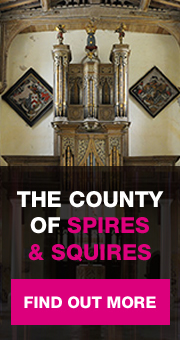Originally a Norman church (west door) with a wide tall chancel added in 1338 when a college here was founded by John Giffard, Canon of York.
It seems to have been the largest private collegiate foundation in England at that time, boasting a provost and 12 chaplains. The singing in the chancel must have been wonderful. Note the three howling animals - are they lions or bears? - above the splendid gothic porch. Less wonderful is the restoration by G.E. Street of 1877 which accounts for the stripped stonework.
THere are three worthwhile memorials. The first is up in the chancel lying beneath a carpet right off the altar. It is an exquisite brass to Robert Wintringham, Canon of Lincoln, who died in 1420. Its design is like a monstrance with the Canon sitting atop a gothic stem. Note his tonsure; it must be one of the most beautiful brasses in the county.
Cotterstock now feels miles from anywhere but in medieval England its attachment to the great ecclesiastical seats of Peterborough and more distant Ely counts for its then importance. At the other end of the church beneath the bell tower is a wall memorial to John Simcoe, (d. 1760) who was a captain in the navy and was killed before Quebec in 1759. His naval exploits are commemorated in the bas relief beneath the tablet which show a ship in heavy waters near a fort. Is this the St. Lawrence?
Simcoe and his wife, Katherine Stamford, lived at Cotterstock. Their son John Graves Simcoe would become the first Governor of Upper Canada and is commemorated in one of Flaxman’s greatest monuments in Exeter Cathedral. The Cotterstock wall tablet is by Edward Bingham of Peterborough who also provided Lord Fitzwilliam with fireplaces at Milton Hall. In Northamptonshire his monuments are also found at Titchmarsh, Oundle, Clinton, and Uffard.
The son of Lord Melville, Lt the Hon. Kenneth Dundas, died at Gallipoli in 1915. On the south wall of the church is a stone memorial put up in 1919, possibly to the design of Mrs. G. F. Watts, commemorating his life, particularly as a commissioner in British East Africa. On the left you find him mounted on a camel, on the right in a sailing boat at sea. African palms surround the cross which tops this charming and unusual tablet.
Please refer to the Glossary for any terms in the text that you are unfamiliar with.







